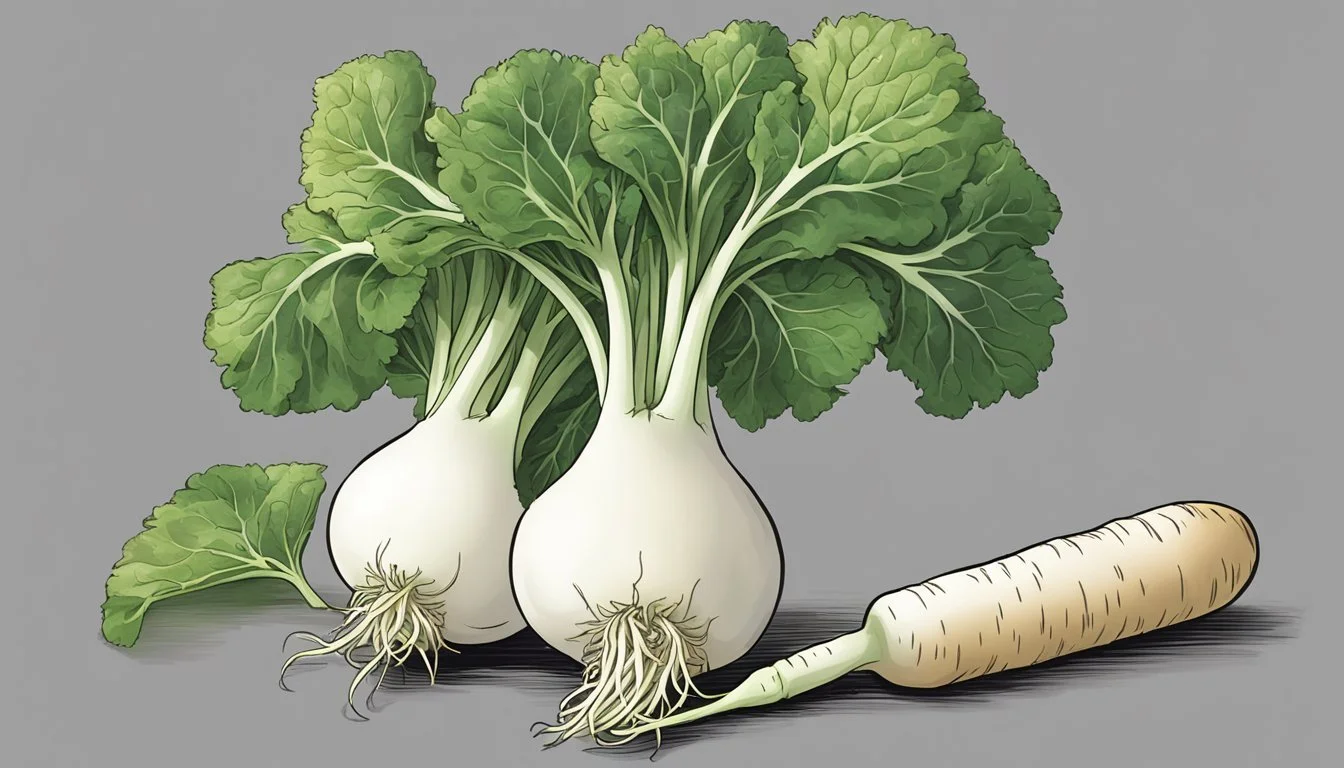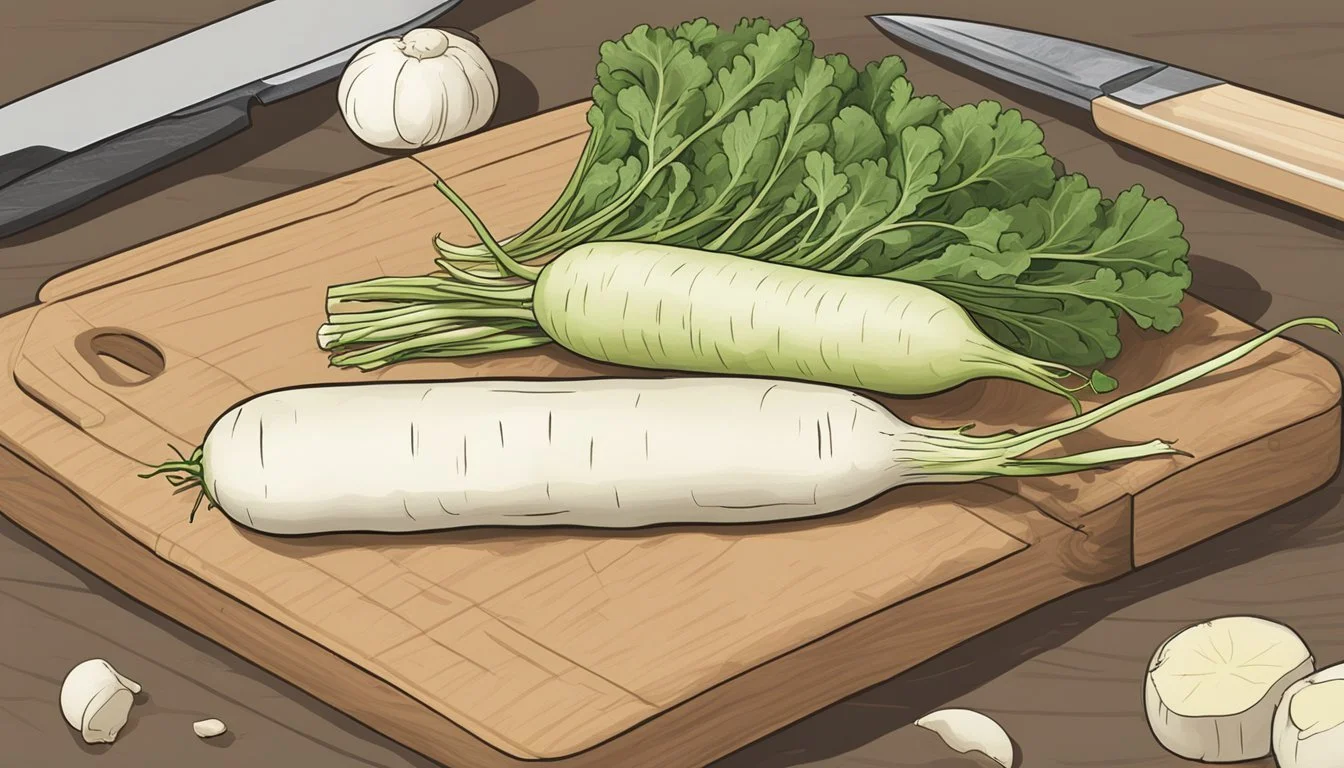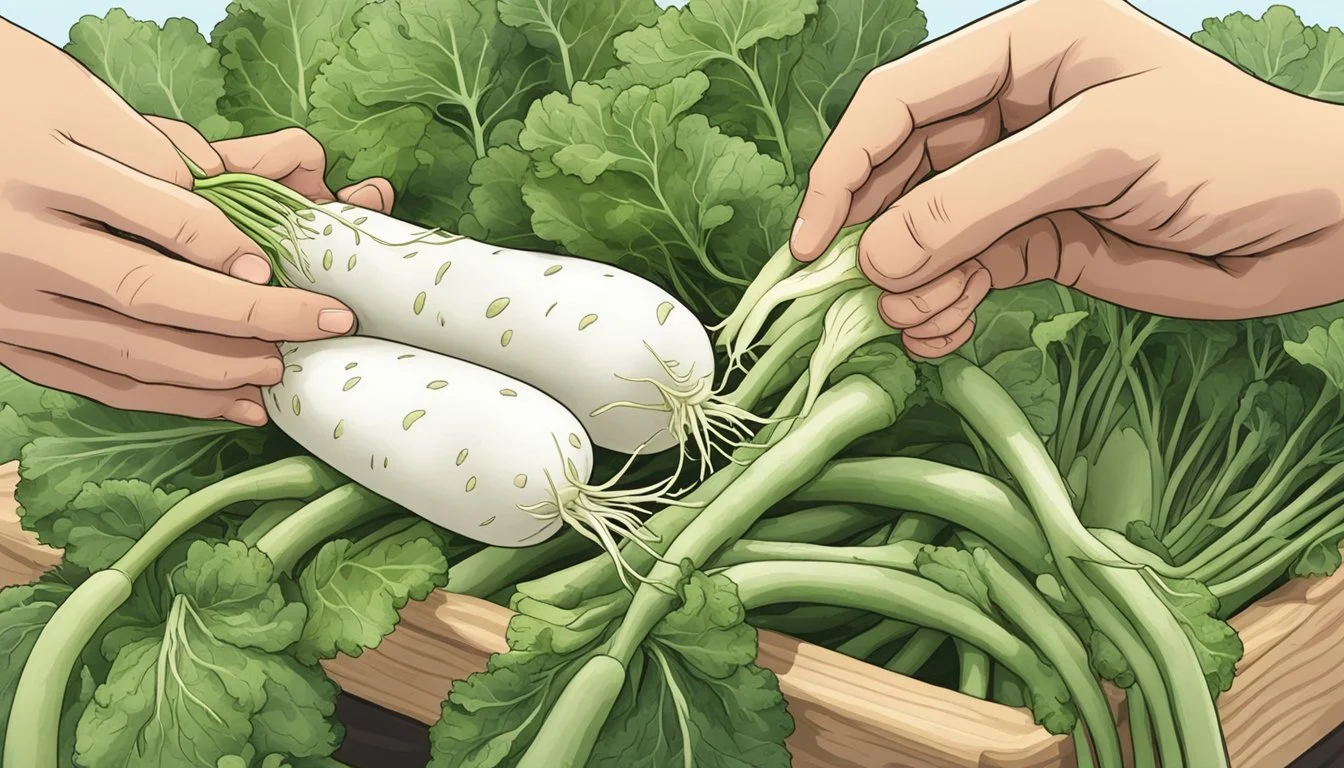How to Substitute Daikon Radish for Regular Radish
A Simple Swap Guide
Daikon radish, known for its mild flavor and crisp texture, is a versatile root vegetable often used in Asian cuisine. As a member of the radish family, it offers a balance of peppery and sweet notes, making it suitable for a variety of dishes from salads to soups. However, not everyone has easy access to this particular type of radish, and sometimes substitutions may be necessary in the kitchen.
When looking for a regular radish to replace a daikon radish, it's essential to consider the characteristics of the daikon. It's larger, milder, and less peppery compared to the commonly found red or round radishes. Therefore, finding an equivalent replacement requires selecting alternatives that can mimic the texture and flavor profile of the daikon radish to maintain the integrity of the dish. With the right substitute, the desired crunch and slightly sweet flavor can still be achieved without compromising the overall taste of the recipe.
Understanding Daikon Radish
Daikon radish is a versatile root vegetable appreciated for its unique characteristics, nutritional benefits, and wide-ranging culinary uses, particularly in Asian cuisine.
Characteristics of Daikon
Daikon, a winter radish, has a long, white, tubular shape. It stands out from other radish varieties with its mild flavor and crunchy texture. The taste of daikon radish is less peppery and more subtle, making it a favorite in various dishes that call for a delicate radish flavor.
Nutritional Value
Daikon is low in calories yet high in important nutrients. Notably, it is a good source of vitamin C and fiber. Here's a brief nutritional profile for a one-cup serving of raw daikon:
Nutrient Amount Calories 20 Fiber 2g Vitamin C 22% of RDI
Culinary Uses
Daikon radish is deeply integrated into Asian cuisine. Its mild flavor pairs well with a variety of ingredients without overpowering the dish. Often used fresh in salads, it also holds up well to cooking, commonly found in stews, soups, and stir-fries. Daikon can be pickled as well, a popular preparation in Japanese cuisine, offering a delightful complement to heavier meals.
Regular Radish Overview
Regular radishes, typically referred to as red radishes, are a common root vegetable known for their crisp texture and distinctive flavor. They serve as a versatile ingredient in various culinary applications.
Types of Regular Radishes
There are several varieties of red radishes, including:
Cherry Belle: A round, bright red radish with a crisp texture.
French Breakfast: An elongated radish with a mild taste and red and white coloring.
Watermelon Radish: Large and round with green skin and a vibrant pink interior. Despite its name, it's actually a type of red radish.
Flavor Profile
Regular radishes are characterized by:
A peppery flavor that can range from mild to quite pungent.
Crunchy texture that is both juicy and firm.
A hint of spiciness, but not overpowering when eaten raw.
Common Uses in Dishes
Red radishes are commonly used in:
Salads: Sliced or grated for a crunchy, peppery addition.
Pickles: Often pickled for a tangy, crisp snack or garnish.
Sandwiches and Tacos: Thinly sliced to add a sharp, crispy contrast.
Daikon Radish Substitutes
When the crisp, mild flavor of daikon radish is not available for your recipe, several alternatives offer a similar texture and taste profile. This section helps identify appropriate substitutes and how to select them.
Selecting a Substitute
When choosing a daikon radish substitute, one must consider the intended use in the recipe, whether it's for raw applications like salads or for cooking methods such as ro
Preparing Substitutes
When substituting Daikon radish for regular radish, it is important to consider the method of preparation, as the texture and flavor can vary greatly between raw and cooked dishes. Creators of salads, slaws, and other raw preparations often value Daikon's crispness, while those crafting soups, stews, or roasted dishes may prefer its milder taste and hearty texture.
For Raw Preparations
In raw dishes such as salads and slaws, one can usually substitute regular radish for Daikon in equal amounts. However, regular radishes tend to have a spicier, more peppery bite compared to the milder Daikon. To achieve a balance, one might slightly reduce the quantity of regular radish or alternatively, slice them thinner to distribute their more potent flavor evenly.
Salads: Substitute thinly sliced or julienned regular radishes.
Slaws: Use grated radishes, lightly salted, to draw out excess moisture.
For Cooked Dishes
Within cooked applications like stir-fries, soups, stews, casseroles, and when roasting, steaming, or grilling, regular radishes can replace Daikon, keeping in mind that they often possess a more pronounced taste and may soften more quickly. It's recommended to add them later in the cooking process to maintain some crunch.
Stir-fries: Use radishes cut into small, equal-sized pieces for even cooking.
Soups/Stews: Incorporate radishes in the latter half of cooking to prevent them from becoming too mushy.
Roasted/Grilled: Quarter radishes for a caramelized exterior and tender interior.
Daikon Radish Substitute FAQs
What can be used in place of daikon radish for similar texture?
One can use parsnips or carrots as substitutes as they offer a comparable crunch, making them apt for raw applications or cooking methods that require a firm texture.
How does the sweetness compare?
Daikon radish is mildly sweet. Substituting with parsnips will result in a sweeter flavor, particularly when cooked. Carrots also offer a sweet flavor profile.
Are there spicy alternatives to daikon?
For a spicier kick, Korean radish and horseradish may serve as potent substitutes. Both provide a peppery punch, with horseradish being especially intense.
How do substitutes affect the overall flavor of a dish?
Each alternative imparts its own unique flavor. For example, Korean radish will add a slightly sweet and peppery note, whereas water chestnuts, which are more subdued, provide a crunchy texture with a hint of nuttiness.
Can these alternatives be used in the same proportions as daikon?
Mostly, yes. Replace daikon with these alternatives in a 1:1 ratio. One exception is red radishes, which might be used less due to their more distinct flavor.
What considerations should be taken for cooking and preparation?
Simply consider that different substitutes may require minor adjustments in cooking time or seasoning to ensure a balanced dish.
How should substitutes be stored?
Storage remains uncomplicated; store the majority of the recommended radish substitutes in a cool, dry place, much like you would daikon radishes.
Health and Dietary Considerations
When substituting daikon radish for regular radish, it is important to consider the health and dietary implications of this swap. Daikon radishes provide unique benefits and may alter nutrient profiles, while adhering to dietary preferences and restrictions.
Low-Calorie Alternatives
Daikon radishes are low in calories, making them an excellent substitute for individuals focusing on weight loss. One hundred grams of daikon contains just 18 calories, and the root is rich in water and fiber, which can help promote fullness and reduce overall calorie intake. Their high water content ensures they are hydrating while the fiber supports digestive health.
Nutrient Daikon Radish Regular Radish Calories Low (~18 per 100g) Low (~16 per 100g) Water Content Very High High Fiber Moderate Moderate
Allergies and Sensitivities
Both daikon and regular radishes are not common allergens and are suitable for most people. However, individuals with a known sensitivity to cruciferous vegetables should approach daikon with caution due to its membership in this family. Daikon and regular radishes may cause digestive discomfort in some individuals with sensitive stomachs or conditions like IBS.
Dietary Restrictions
Vegan: Daikon radish is suitable for vegan diets, containing no animal products and offering an ample amount of minerals and vitamin C. They are a good source of potassium, which is essential for heart health.
Diet Type Daikon Radish Suitability Regular Radish Suitability Vegan Yes Yes Gluten-Free Yes Yes Paleo Yes Yes
Lastly, for those with dietary restrictions related to religious practices or personal preferences, daikon radishes are a versatile and acceptable ingredient across a spectrum of diets. They contain no gluten or animal-derived components, ensuring they are a viable option for gluten-free and paleo diets as well.
Finding Ingredients
When substituting daikon radish for regular radish, one's success hinges on locating the right ingredients. The following guides provide a roadmap to finding suitable replacements in various retail environments.
Supermarket Guide
Supermarkets are a treasure trove of produce that can mimic the texture and flavor profile of daikon radish. Shoppers may find parsnips and Korean radish, which are excellent substitutions. Parsnips, with their sweet and nutty flavor, can be found in the root vegetable section, often near the potatoes and carrots. Korean radish, a bit rounder and shorter than daikon, has a peppery and slightly sweet flavor, perfect for Asian cuisine dishes. Moreover, watermelon radish and white turnips can sometimes be sourced in the radish or general produce aisle.
Local and Organic Options
For those prioritizing local and organic produce, visiting a local farmers' market can yield fresh and organic alternatives like jicama or turnips. Jicama boasts a mildly sweet taste and crispy texture, making it a fitting replacement for daikon radish, particularly in raw preparations. Organic options can offer superior flavor and environmental benefits. Seek out local market vendors specializing in Asian vegetables, as they are more likely to stock varieties of radish suitable for cooking traditions from that continent.








